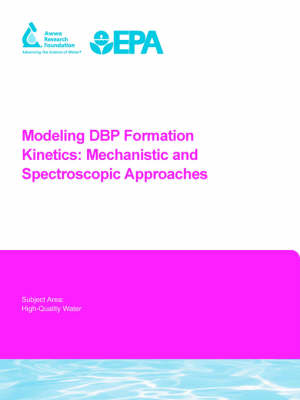Numerous statistical models for DBP formation kinetics exist, along with a smaller number of mechanistic models. These models require extensive calibration, and their applicability under conditions that differ from those used in the calibration is questionable (especially the statistical models). Models that are scientifically defensible and that have a tractable number of fitting parameters are needed. Virtually no data have been collected for DBP formation at very short reaction times.The primary objective of this project was to develop a mechanistic kinetic model of THM and HAA formation consistent with current understanding of the reaction mechanisms. Ideally, the model would account for the effects of Cl dose, pH, temperature, and bromide concentration on DBP formation kinetics and speciation. Secondary objectives included the study of DBP formation at very short reaction times ( 1 s) and development of a model for DBP formation as a function of the changes in absorbance of the sample upon chlorination.Originally published by AwwaRF for its subscribers in 2004. This publication can be purchased and downloaded via Pay Per View on Water Intelligence Online - click on the Pay Per View icon below
- ISBN10 1843398958
- ISBN13 9781843398950
- Publish Date 1 January 2005
- Publish Status Out of Print
- Out of Print 2 March 2017
- Publish Country GB
- Imprint IWA Publishing
- Format Paperback
- Pages 180
- Language English
